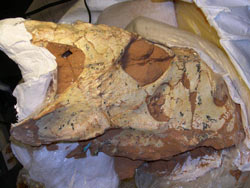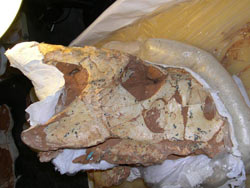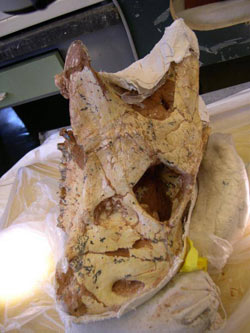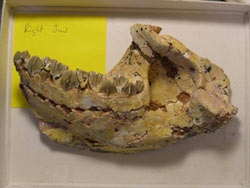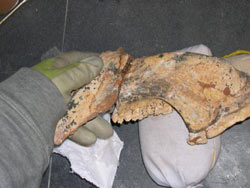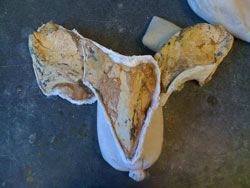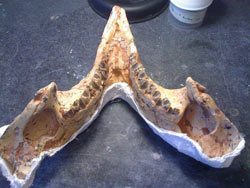Protoceratops
Finding
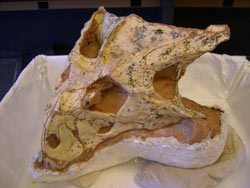 | 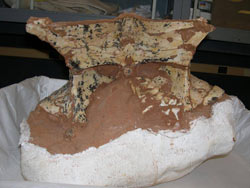 |
Sometimes paleontologists studying fossils find that they have to reexamine a specimen that was collected and prepared many years before. As a result, preparators may have to do additional work on a fossil so that researchers can study other elements of the morphology or reevaluate the information that was originally gleaned. In the case of this Protoceratops skull that was being studied in the Division of Paleontology at the American Museum of Natural History, initial preparation had already been carried out when preparator Justy Alicea was given the task of completing the project. The first two pictures show what the specimen looked like when he received it. The block included a complete lower jaw that was still enclosed in the jacket. His task was to finish the preparation without destroying any of the fragile frill at the back of the skull and ensure that it was strong enough to be studied for publication.
Revealing
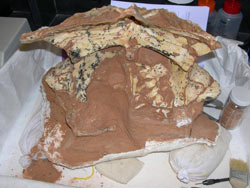
| 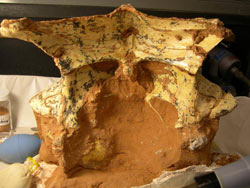
|
To make the specimen easier to handle and prepare, Justy started by removing as much of the excess matrix as possible. He began by continuing the preparation of the back of the skull since the majority of the matrix still in the block was in the back, behind the delicate frill.
|
| |
|
|
Here (ex. 1) the skull has been laid on its left hand side and Justy has begun the process of excavating deep inside the orbits. In the second image (ex. 2) the upper jaw tooth row is revealed. The skull is completely prepared in the third image (ex. 3).
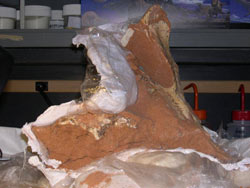
When the skull was turned on its side Justy realized that he would have to remove the lower jaw, which had major horizontal cracks. The lower jaw was removed and prepared separately.
|
| |
|
|
Here (ex. 4) you see the finished cranial half of the proto lower jaw. When holding the two halves of the jaw the full length and shape of the lower jaw can be seen (ex. 5). Justy had to clean the contact edges, which were still partly infused with plant roots from burial. These were fully removed before the pieces were fixed together using adhesive to ensure a strong hold. Placing them together temporarily allowed for alignment (ex. 6). Once preparation was completed Justy made a new plaster support that allowed the specimen to be manipulated putting stress on the joins (ex. 7).
Studying
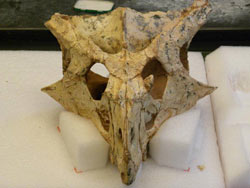 | 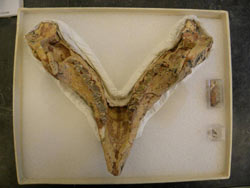 |
Here the skull and the lower jaw are placed in their permanent storage housings. The paleontologist will be able to safely study and handle the specimen; once the work is completed it can be returned to storage until it is needed again. For more information on rehousing fossil specimens visit the Collection Management module.
